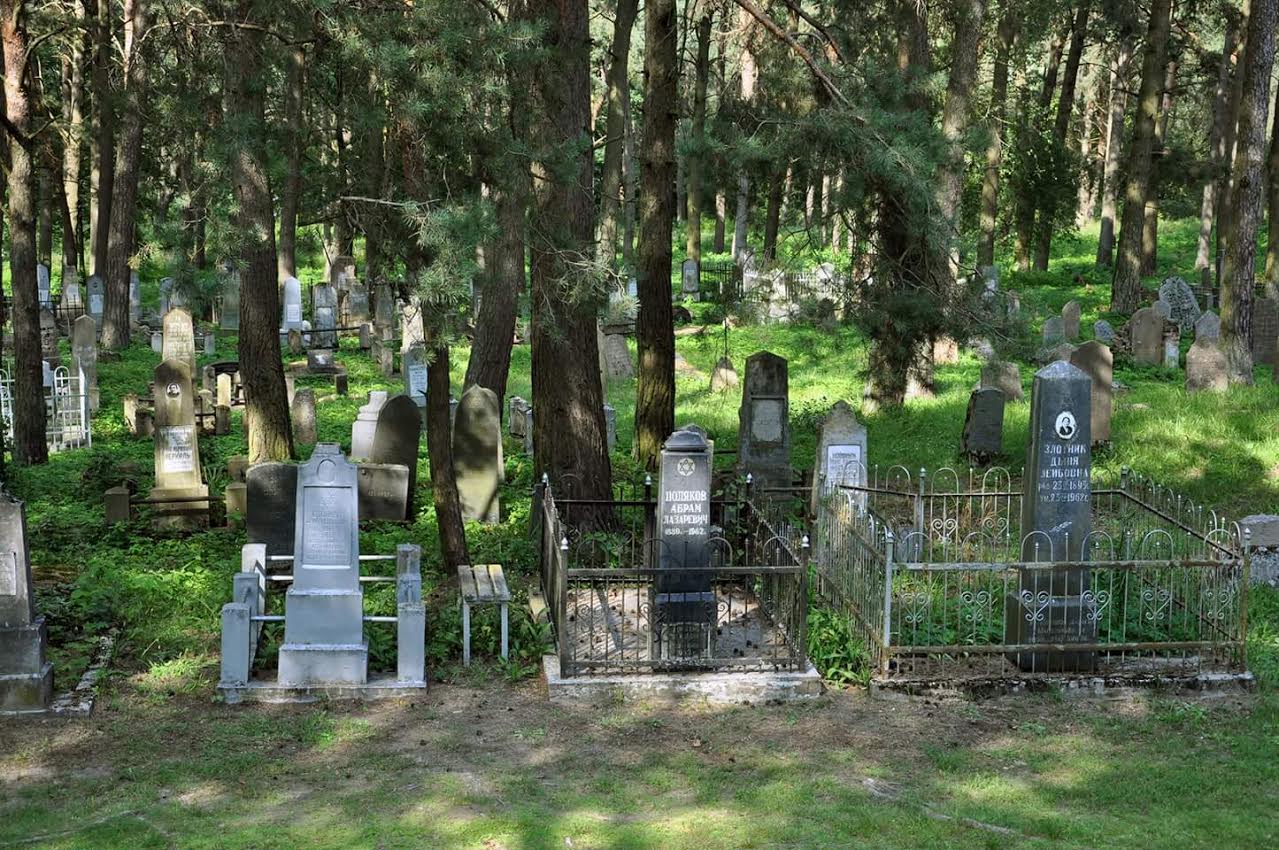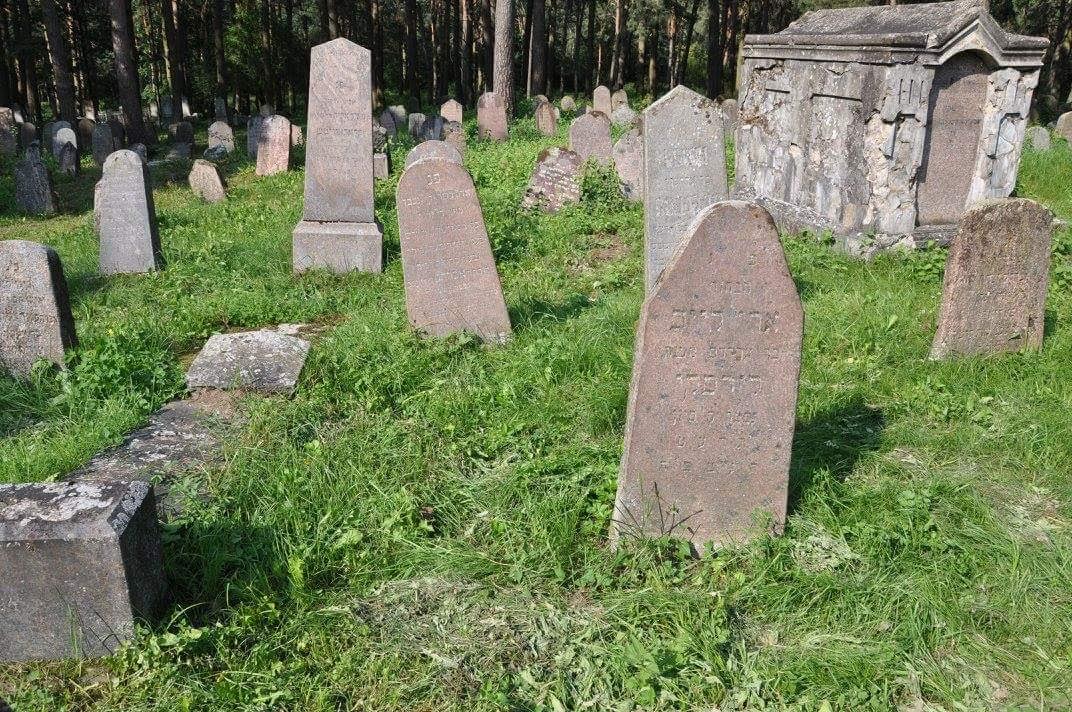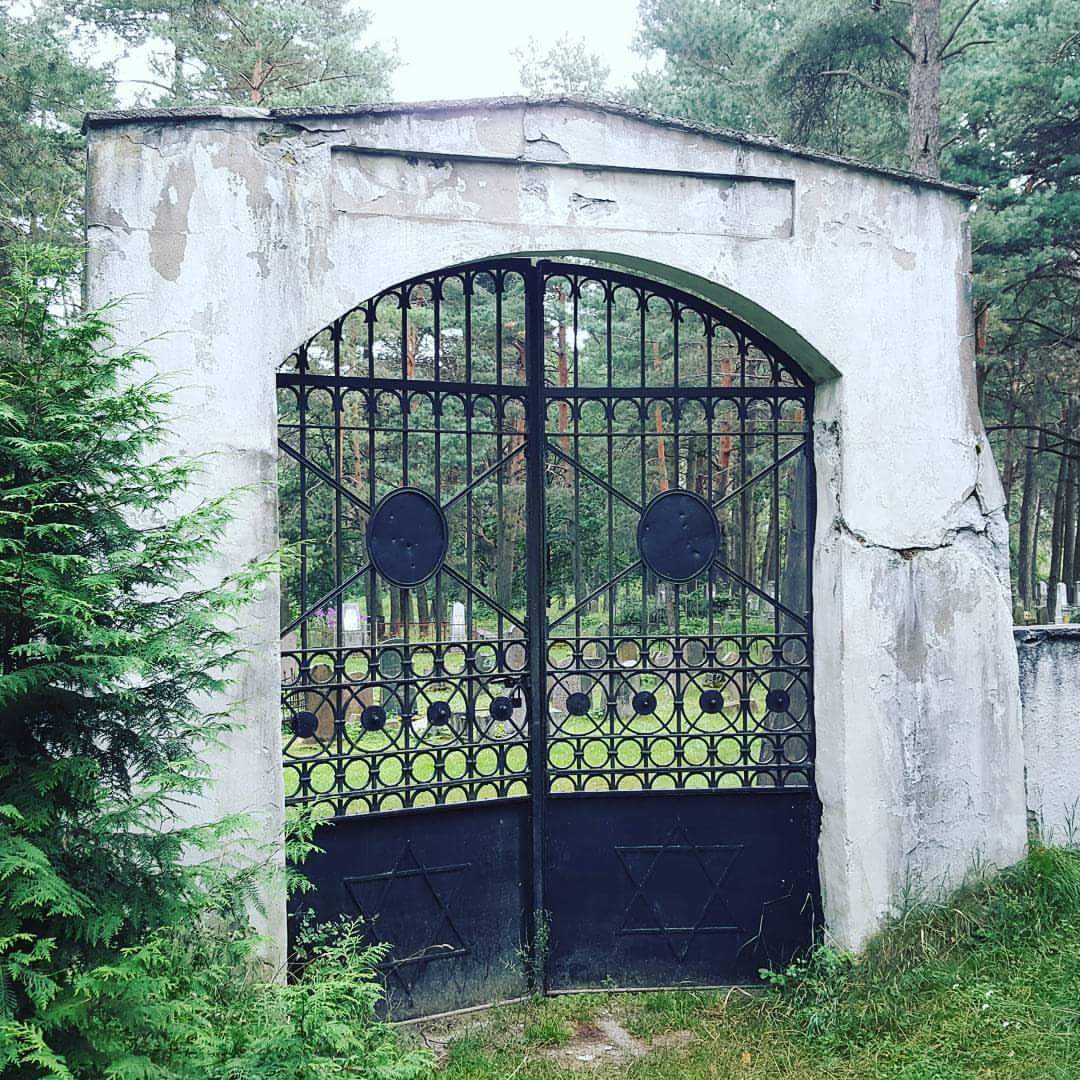Alternate names: Grodno [Pol, Rus], Grodne [Yid], Hurodno [Yid], Hrodna [Bel], Gardinas [Lith], Garten [Ger], Horodne, Russian: Гродно. Belarusian: Гродна. Yiddish: גראָדנע. Capital of Grodno gubernia, 1801-1917.yizkor. JOWBR: Nemenskaya Cemetery. Yizkor Books (3 Books): Grodno (Jerusalem, 1973) ; Kovets Grodna-Zaml-heft Grodne (Tel Aviv, 1958); Kehilat Grodna u-sevivatah bi-tekufat milhemet ha-olam ha-sheniya u-vi-tekufat ha-shoa, 1939-1944 (Jerusalem, 1995) [October 2000] town images and links [March 2009]
On the Issue of the Former Jewish Cemetery in the City of Grodno: The old Jewish cemetery located at the Gorky Street in Grodno was closed in April 1949. A decision to build a stadium at a 10-hectare site including the territory of the old cemetery was made in March 1958. During the construction of the stadium, the cemetery was demolished. The construction of the stadium was completed in December 1964. ... story continues. [March 2009] Soviet authorities demolished the Jewish cemetery and built the "Red Flag Stadium," later renamed "Neman," over ancient tombstones and graves that still were being visited by living relatives. Many tombstones were used to pave roads. The metal sign at the cemetery entranceway was used to build a monument of Lenin in Grodno's central square. Some locals even used the gravestones for personal purposes. Now, after years of effort, members of the community fought to construct some form of memorial.and successfully received permission to put up a commemorative plaque. http://www.grodnoonline.com/lost_worlds/section_3_test.html has a photo of the old Grodno cemetery. (Scroll down). Protests over Belarus Jewish graves [October 2002]
Nemanskaya Cemetery: Located at 5341 2350 in Grodno uezd, Grodno guberniya-Grodno Oblast. Alternate names: Grodno. See some pictures. There were once three Jewish cemeteries in Grodno. The main cemetery, closest to the city center, was destroyed by the Soviets in the early 1960s: leveled, dug up, and replaced by a sports complex that is still in use. A second cemetery also was destroyed by the Soviets. One cemetery remains, located directly across the Neiman River from Grodno in a forest on the riverbank below the New Bridge (Nowy Most). I estimate that there are at least 1500 stones there. The oldest is dated 1758 (still readable) and the latest from 1970. The government has not allowed burials there since. My friend and I wrote down and/or photographed most of the readable stones. I will put the information into a spreadsheet. The cemetery is in awful condition. The gates are left open; and several sections of the wall are missing. It is overgrown with vegetation. Many stones are missing, toppled, or broken. A lot of the old stones are very worn and submerged in the ground. The main exception is the grave of a famous man named Suesskind, restored recently via money from donors in Israel. A couple actually lives in the cemetery in a house that forms part of the cemetery wall. In the past, they have been paid to take care of the cemetery. (They do a poor job.) Their chickens roam throughout the cemetery. Their two old cars lie abandoned within the walls of the cemetery; and their laundry hangs on tombstones. In the past, the couple received about one million rubles per months (about $7) for the upkeep but they have not been paid recently. I gave them a few dollars, which made them happy. While in the cemetery, we met a few interesting people. One was Michael Kemerov. He is a very nice man in his early 30s, a Jew active in the Jewish community. He is writing a book on the history of Jews in Grodno. He asked for any information or pictures of Jews in Grodno. I have his mailing address. We also saw a man who was cleaning two gravestones and painting them gold. He explained that the stones were the graves of his grandparents. The following day, we saw him there with his wife and small daughter. We also met two Jewish men in their seventies, who bemoaned the state of the cemetery. Everyone we talked with supported the idea of restoring the cemetery and agreed that it would be relatively easy to fund because of the relative strength of the dollar. A very important person in the community is named Grisha Chosid. He is 74 [1998] years old, a retired physics teacher who escaped from the Nazis by jumping through a window in a boxcar headed for Treblinka in the middle of the winter. He later fought as a partisan during the war. He speaks English. He showed us the cemetery near Nowy Most the first time. The Hesed Nachum Jewish Welfare/Community Center is located at Bogdanovich Street #6 in Grodno. Published in Grodno Genealogy Group, Inc. Newsletter: December 1998. Chaimovich Bojarski has gathered money to do work. He has now been tried and convicted of fraud. They did not jail him because of his military service and age. A good contact would be Dr. Leszek Hondo, ul. Skowronkow 9 m. 126, 33-100, Tarnow, Poland. This email address is being protected from spambots. You need JavaScript enabled to view it., source of the above, visited the cemetery in November 1998. . There are no more Jewish burials in Grodno; bodies have to be taken to Minsk for a Jewish burial. Source: http://www.kinneret.co.il/sa9802/amv4.txt> - {link no longer available}
UPDATE: This email address is being protected from spambots. You need JavaScript enabled to view it. worked in Grodno cemetery this summer to completely clean and clear the site, raise fallen stones, and record names. He collected 1,850 names from the Grodno (Nemenskaya) cemetery for the years 1784-1968 that are being translated and donated to the JOWBR.has Eric Adler's finished report. [July 2000]
photos. [February 2010]
Photos from Facebook [February 2017]
Note: Photo of Gate from Andre Burdenkov [August 2017]




